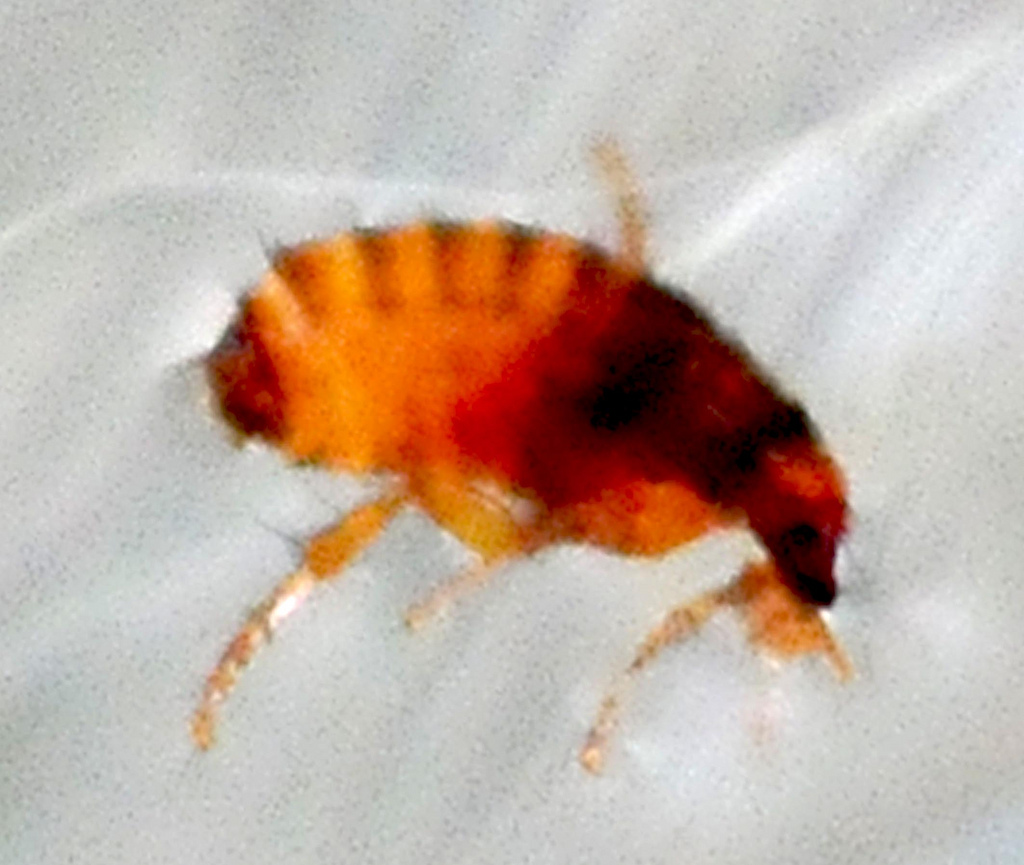Flea allergy dermatitis (FMD) is one of the most common skin conditions in dogs and cats, accounting for tens of thousands of veterinarian visits each year.

Dog flea: photo by jwinfred.
Whether you’re currently dealing with a flea infestation or not, it’s important to familiarize yourself with FAD. Knowing the basics of this conditions, such as the signs and symptoms, will allow you to make smarter decisions regarding your pet’s health.
Flea allergy dermatitis: The Scoop
So, what exactly is flea allergy dermatitis (FAD)? In short, it’s an allergic skin sensitivity to flea saliva. When a flea finds a host, it will bite into the flesh to draw blood. Pets that are allergic to fleabites have the condition FAD.
The fact is that all pets are irritated by fleas, but only some pets are allergic to them. If your pet doesn’t exhibit any symptoms after being bitten by a flea, then they don’t have FAD.
Why Fleabites Cause Allergic Reactions
Fleabites oftentimes cause allergic reactions in pets and humans due to their saliva. Fleas draw blood by piercing their host’s skin with a hollow syringe-like needle. During this process, some of the flea’s saliva enters the host’s body, at which point it may cause an allergic reaction.
Not-So-Fun Fact: Scientists have identified 15 different allergens in the flea’s saliva. And it only takes a single one of these allergens to trigger a reaction. This is why FAD is such a common and widespread condition in pets.
Flea Allergy Dermatitis (FAD) Symptoms

Dog scratching from FAD: photo by Lee J Haywood.
See the list below for some of the most common symptoms of FAD in pets.
- Skin redness
- Small red pumps (with or without pus)
- Patches of scabs or scaly skin
- Hair loss around the fleabite
- Excessive itching
- Over grooming (licking, gnawing, cleaning)
Phew, My Pet Doesn’t Suffer From FAD!
Well, you aren’t out of the woods yet. It’s a little-known fact that pets can develop FAD at any point in their life. Even if your pet currently doesn’t show signs of FAD after being bitten by a flea, they may develop an allergy to it later.
This is why it’s important for owners to treat and prevent flea infestations in their home; otherwise, pets are exposed to fleabites which increases their chance of developing FAD.
If your pet is suffering from severe fleabite allergies, don’t hesitate to take them to a veterinarian. The severity of FAD can range from minor to severe, but only a qualified vet can guide you on the best course of treatment.
